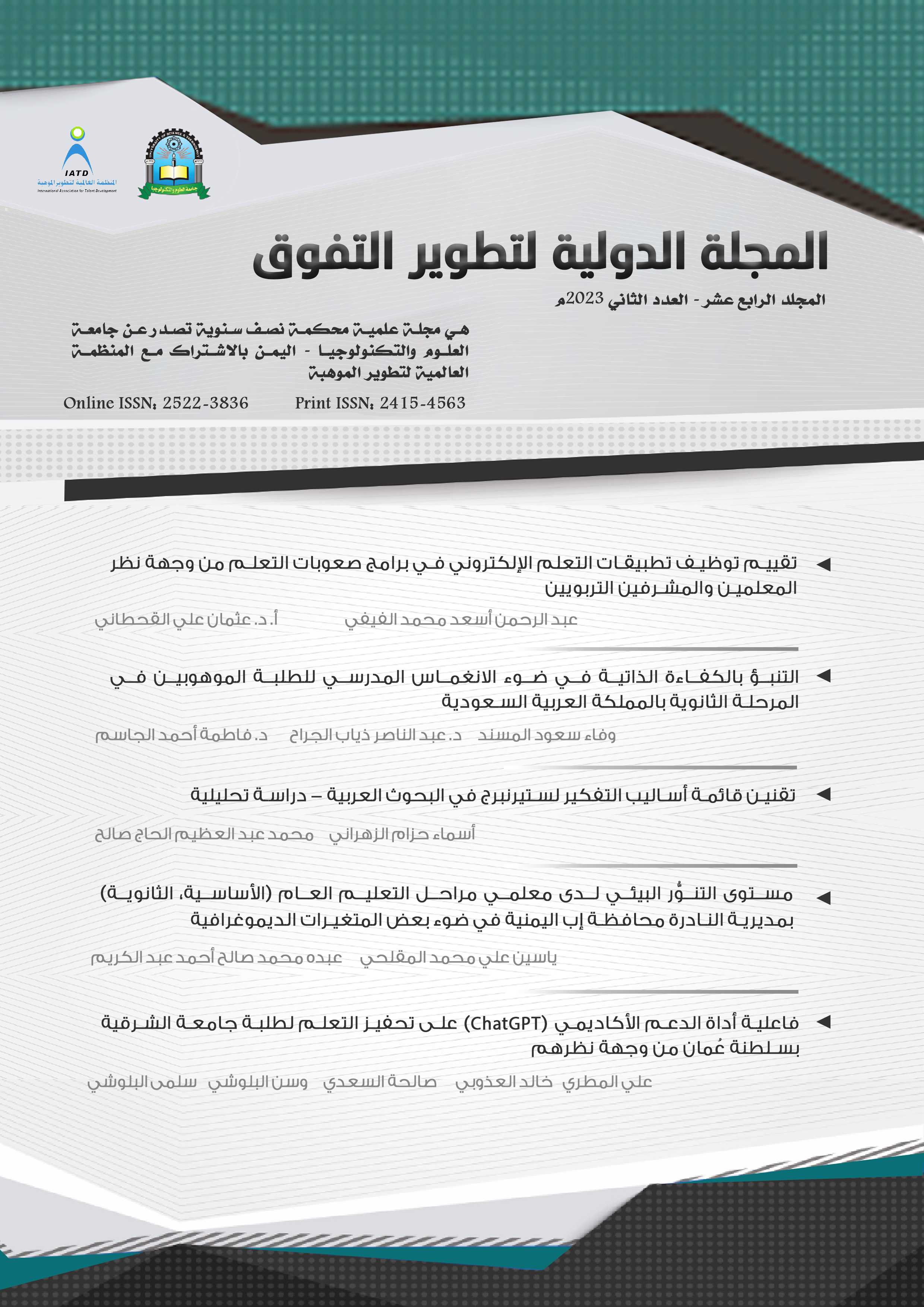The effectiveness of the academic support tool (ChatGPT) on stimulating learning for A'Sharqiyah University students in the Sultanate of Oman from their point of view
##plugins.themes.bootstrap3.article.main##
Abstract
The study aimed to identify the relationship of the effectiveness of the academic support tool (ChatGPT) on stimulating learning for A'Sharqiyah University students in the Sultanate of Oman from their point of view. The researchers used the descriptive survey method. The study sample consisted of (250) male and female students, while the study tool consisted of a questionnaire. The results of the study showed: The degree of practice of A'Sharqiyah students of the academic support tool (ChatGPT) was average, and the results of the study showed that the degree of possession of A'Sharqiyah students to stimulate learning was to a large degree, and there were no statistically significant differences between the averages of the answers of A'Sharqiyah students on the degree of practice of A'Sharqiyah students of the academic support tool (ChatGPT) and the degree of their possession of motivation to learn in the total degree, according to the variables of gender, academic year, and college. There is also a positive correlation between the practice of A'Sharqiyah University students of the academic support tool (ChatGPT) and their possession of stimulating learning, and the study recommended the need for A'Sharqiyah students to activate the academic support tool (ChatGPT) in university life.
Downloads
##plugins.themes.bootstrap3.article.details##
: Artificial Intelligence, ChatGPT, Stimulating learning, Academic Support, A'Sharqiyah University.

This work is licensed under a Creative Commons Attribution 4.0 International License.
IJTD publishes Open Access articles under the Creative Commons Attribution (CC BY) license. If author (s) submit their article for consideration by IJTD, they agree to have the CC BY license applied to their work, which means that it may be reused in any form provided that the author (s) and the journal are properly cited. Under this license, author(s) also preserve the right of reusing the content of their article provided that they cite the IJTD.

 https://orcid.org/0000-0002-8124-4730
https://orcid.org/0000-0002-8124-4730







